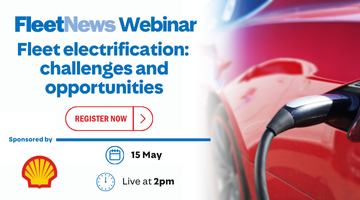For every 100 miles, the average van driver accelerates too harshly seven times, brakes heavily three times, and corners too hard 18 times.
That’s according to new analysis of driver data by Lightfoot, which says that the average untrained van driver triggers alarm bells every three miles.
The figures, captured during blind testing by its coaching devices before they are switched on, reveal what it is describing as an epidemic of poor driving on Britain’s roads.
“The testing we’ve done to show how the average van driver behaves reveals some shocking numbers,” said Lightfoot CEO Paul Hollick. “But it is important to understand this so we can then provide a benchmark, and a solution.”
G-force meters in Lightfoot devices record when a van’s movements exceed predefined thresholds determined by extensive testing.
As an example, the force generated when accelerating from 0-60mph in around 10-15 seconds serves as one benchmark.
According to Lightfoot, these thresholds range from lower-severity events, such as those that increase vehicle wear and tear and fuel consumption, to more extreme instances that could compromise the safety of the driver and other road users.
However, once the blind phase is complete and the Lightfoot in-cab coaching device is turned on, it says that harsh acceleration events have been proven to halve, with noticeable falls in braking and cornering too.
Overall, Lightfoot says it is able to reduce incidences of aggressive driving by nearly a quarter, improving fuel economy, extending EV range, slowing wear and tear, and making roads safer for everybody.
With some customers, Lightfoot has seen all incidences drop by more than 50% once the device is activated.
The driver scoring system - where drivers aim to achieve an Elite Driver score of 85% - highlights the transformative impact of Lightfoot’s in-cab coaching device.
On average, uncoached drivers score 59.6%, while those using Lightfoot reach 84.1%.
This improvement, says Lightfoot, leads to a 50% reduction in harsh acceleration events, a 12% decrease in harsh braking, and a 15% reduction in harsh cornering.
The 85% Elite Driver score is backed by scientific research from the University of Bath, extensive driving data analysis, and customer insights.
Reflecting on Lightfoot’s analysis of van drivers, Hollick said: “It’s worth noting that these driving behaviours are often not illegal, and not always unavoidable either: sometimes a driver may have to brake or accelerate hard due to what’s happening on the road around them.
“We don’t want to stop those from happening as they constitute a safety issue. But what we want to do is cut out unnecessary, often aggressive driving actions, and we’ve proved beyond doubt we can do that.”
Lightfoot says its in-cab coaching technology has been proven to save fuel and emissions by 15%, while in EVs, a smoother, more uniform Lightfoot-enabled driving style contributes to range increases of up to 15%.
Crucially, it has seen accidents reduced by up to 40% while vehicle wear and tear has decreased, leading to a 45% reduction in downtime.
“One of the biggest challenges businesses face is a lack of visibility into how their vehicles are being driven, and the impact this has on other road users, their fleet, employees, and corporate reputation,” concluded Hollick.
“With Lightfoot the reality is laid wide open. The great thing is, Lightfoot provides full visibility, helping these businesses address these issues head-on.”





















Login to comment
Comments
No comments have been made yet.